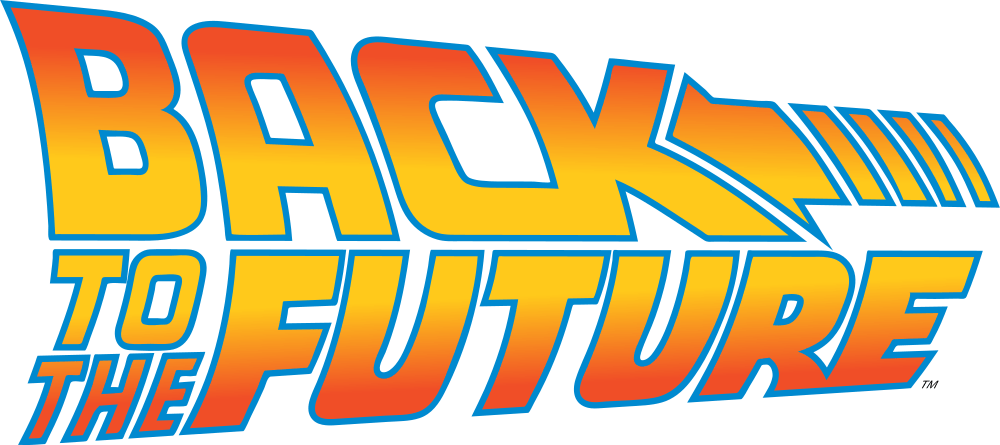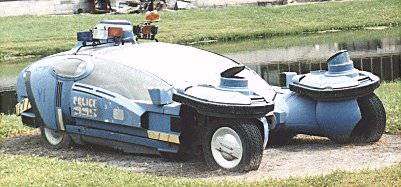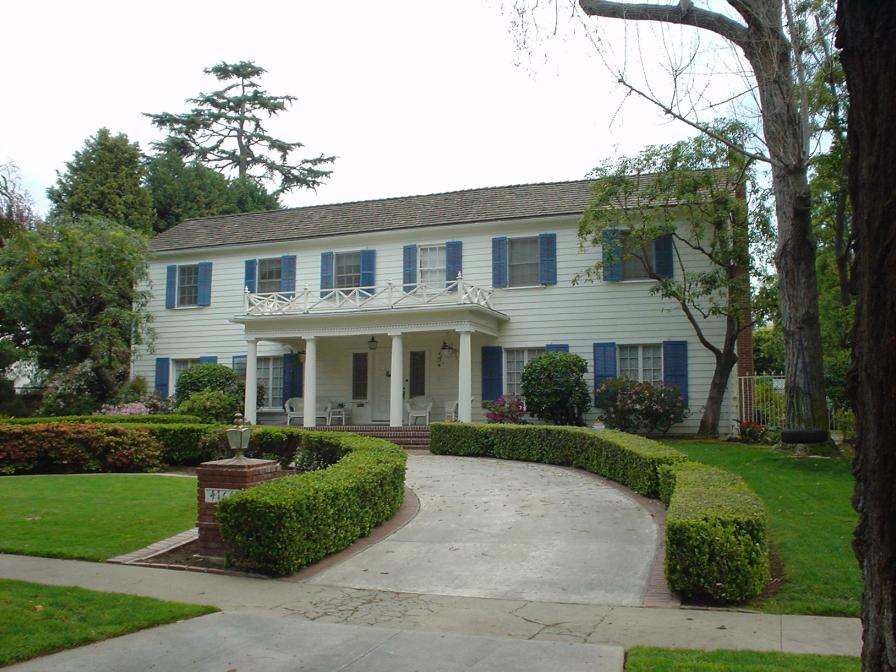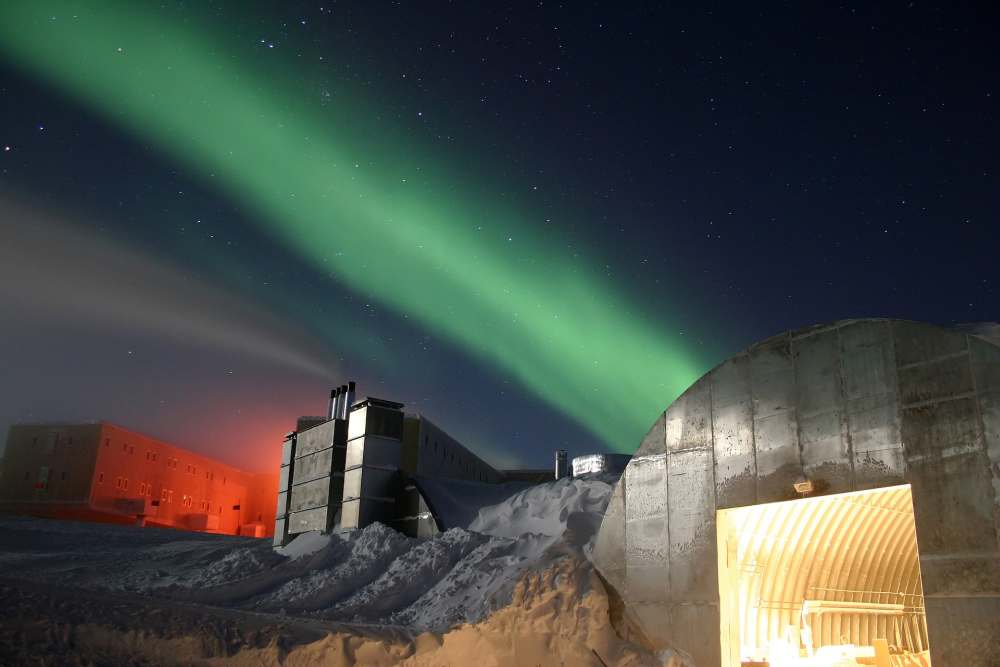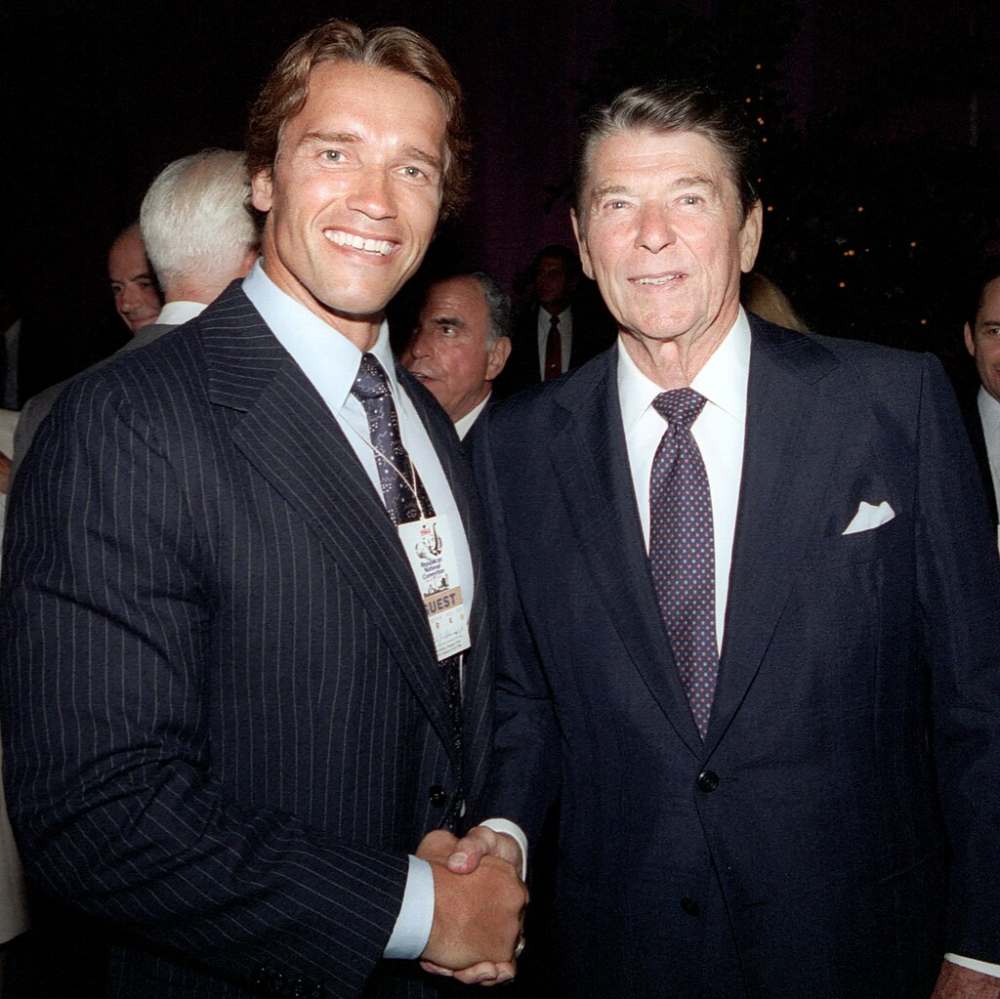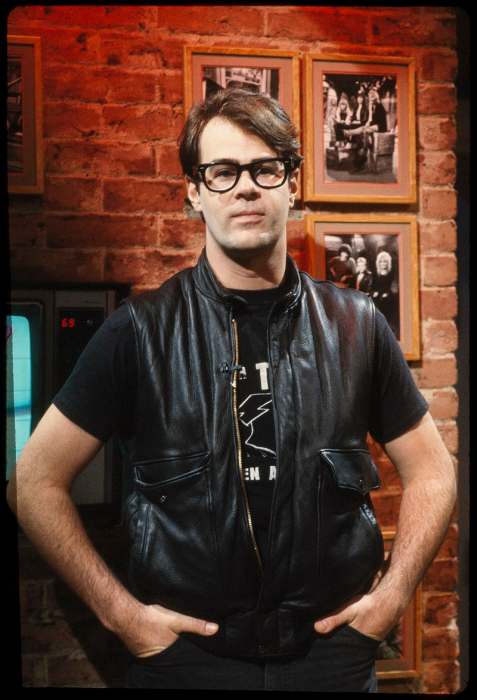The 1980s: a decade of hair spray, leg warmers, and some of the most iconic movies to ever grace the silver screen. It was a time when cinema broke new ground, not just technologically but culturally, giving birth to films that continue to resonate with audiences today. From the rise of blockbuster giants to the golden age of teen dramas, the 80s had it all. But with such a rich catalog, which films stand out as must-sees?
In this article, we dive into the top 80s movies that everyone should watch, offering a mix of genre-defining classics, groundbreaking masterpieces, and cult favorites that together paint a vibrant picture of an unforgettable era in filmmaking.
E.T. the Extra-Terrestrial (1982)
“E.T. the Extra-Terrestrial,” directed by Steven Spielberg in 1982, stands as a monumental achievement in the realm of science fiction and family cinema. The movie tells the heartwarming story of a young boy named Elliott who befriends an alien left stranded on Earth. Together, they form an unbreakable bond, navigating the challenges of keeping E.T. hidden from adults and government officials while Elliott and his siblings devise a plan to help their extraterrestrial friend return home.
Spielberg’s masterful direction, combined with the groundbreaking special effects and a profoundly emotional score by John Williams, captures the innocence of childhood and the wonder of discovery. Beyond its technical achievements, “E.T. the Extra-Terrestrial” delves deep into themes of loneliness, friendship, and the resilience of the human spirit. The film’s portrayal of Elliott’s suburban life and his connection with E.T. resonated with audiences around the world, making it one of the most beloved movies of all time.
Back to the Future (1985)
“Back to the Future,” directed by Robert Zemeckis and released in 1985, is a quintessential 80s classic that masterfully blends science fiction, comedy, and adventure. The film introduces us to Marty McFly, a typical American teenager of the era, who is accidentally sent thirty years into the past in a time-traveling DeLorean invented by his eccentric scientist friend, Doc Brown.
Set against the backdrop of the 1950s, Marty’s journey is filled with humor, heart, and a race against time to ensure his own existence. With its clever plot, charismatic performances by Michael J. Fox and Christopher Lloyd, and a memorable soundtrack, “Back to the Future” not only captivated audiences but also left a lasting impact on pop culture, inspiring sequels, an animated series, and a legacy that continues to enchant new generations.
Indiana Jones (1981)
“Indiana Jones,” introduced to the world through “Raiders of the Lost Ark” in 1981, quickly became one of cinema’s most iconic characters, embodying the quintessential adventure hero. Created by George Lucas and brought to life by director Steven Spielberg and actor Harrison Ford, Indiana Jones is a charismatic archaeologist with a penchant for danger and discovery. The franchise blends history, mythology, and action, taking audiences on exhilarating journeys around the globe to uncover ancient relics and solve historical mysteries.
With its blend of thrilling chases, narrow escapes, and a dash of humor, Indiana Jones not only sets the gold standard for adventure films but also inspires countless other media in the genre. The character’s enduring appeal lies in his mix of scholarly intelligence, rugged charm, and moral integrity, making Indiana Jones a timeless hero whose adventures continue to captivate fans worldwide.
Blade Runner (1982)
“Blade Runner,” directed by Ridley Scott and released in 1982, is a seminal work in the science fiction genre, offering a dystopian vision of the future that has profoundly influenced cinematic and literary landscapes. The film is set in a neon-lit, rain-soaked 2019 Los Angeles, where Rick Deckard, played by Harrison Ford, is a “blade runner” tasked with hunting down bioengineered beings known as replicants.
The movie delves into themes of identity, humanity, and the ethical implications of artificial intelligence, challenging viewers to consider what it means to be alive. Its groundbreaking visual effects, haunting score by Vangelis, and philosophical depth create a mesmerizing and contemplative experience. “Blade Runner” was not just a movie; it was a prophecy of the future of urban life and technology, leaving an indelible mark on the genre and becoming a cult classic for its visionary approach and existential musings.
Star Wars: The Empire Strikes Back (1980)
“Star Wars: The Empire Strikes Back,” released in 1980 as the second installment of George Lucas’s original Star Wars trilogy, is often hailed as one of the greatest sequels in cinematic history. Directed by Irvin Kershner, the film deepens the saga’s lore and elevates the narrative complexity, presenting a darker and more emotionally resonant chapter in the epic space opera. It continues the adventures of Luke Skywalker, Princess Leia, Han Solo, and their comrades as they battle the malevolent forces of the Galactic Empire.
Notable for its iconic moments—including the revelation of Darth Vader’s true identity and Luke’s Jedi training with Yoda—this film beautifully blends action, mythology, and character development. Its groundbreaking special effects and compelling storytelling not only solidified “Star Wars” as a cultural phenomenon but also set a new standard for what a sequel could achieve, enriching the galaxy far, far away for generations of fans.
Ghostbusters (1984)
“Ghostbusters,” directed by Ivan Reitman and released in 1984, brilliantly mixes comedy, science fiction, and supernatural horror to create a cultural phenomenon that resonates with audiences to this day. Starring Bill Murray, Dan Aykroyd, Harold Ramis, and Ernie Hudson as a quartet of eccentric scientists turned ghost-capturing heroes in New York City, the film strikes a perfect balance between humor, quirky characters, and thrilling ghost-hunting adventures. Its iconic catchphrases, memorable special effects, and unforgettable theme song contributed to its status as a pop culture landmark.
“Ghostbusters” not only spawned sequels, animated series, and a massive franchise but also left an indelible mark on the 80s and beyond, showcasing the enduring appeal of combining laughs with scares in a story about the power of teamwork and ingenuity in the face of supernatural threats.
The Breakfast Club (1985)
“The Breakfast Club,” directed by John Hughes and released in 1985, stands as a quintessential film of the 1980s and a defining work in the teen genre. The movie unfolds over a single day, focusing on five high school students from diverse cliques who come together during a Saturday detention. Through heartfelt and honest dialogue, the characters—each representing a specific high school stereotype—break down the social barriers that typically divide them, revealing their deeper fears, hopes, and insecurities.
Hughes’s masterful storytelling and the ensemble cast’s compelling performances create a poignant exploration of adolescent identity, solidarity, and understanding. “The Breakfast Club” resonates with audiences for its universal themes of acceptance and the realization that, despite outward differences, we share common ground. Its impact on pop culture and its contribution to the teen film genre remain unparalleled, making it a timeless classic.
Ferris Bueller’s Day Off (1986)
“Ferris Bueller’s Day Off,” directed by John Hughes and released in 1986, is a standout teen comedy that epitomizes the spirit of youth and the desire for freedom. The film follows Ferris Bueller, played with charismatic charm by Matthew Broderick, who decides to take a day off from high school and embarks on a whirlwind adventure through Chicago, cleverly outwitting his principal and parents along the way.
Hughes’s sharp writing and the film’s infectious energy celebrate the rebelliousness of adolescence, capturing the quintessential day of playing hooky with humor and heart. Beyond its surface of lighthearted fun, the movie subtly delves into themes of friendship, the pressures of impending adulthood, and making the most of the present moment. “Ferris Bueller’s Day Off” remains a beloved classic, encouraging generations to “stop and look around once in a while. Otherwise, you could miss it.”
Sixteen Candles (1984)
“Sixteen Candles,” another iconic film by John Hughes released in 1984, perfectly captures the angst and excitement of teenage life. Centering on Samantha Baker, played by Molly Ringwald, the film explores the trials and tribulations of turning sixteen, especially when her entire family forgets her birthday amid the chaos of her sister’s upcoming wedding. With a blend of humor and heart, “Sixteen Candles” navigates the complexities of high school romance, social hierarchies, and the longing to be understood.
Hughes’s adept storytelling and authentic performances create a relatable and endearing portrait of adolescence, touching on themes of love, acceptance, and the significance of small yet meaningful moments. The film’s nuanced depiction of teenage emotions and its memorable characters have cemented its place as a classic in the coming-of-age genre, resonating with audiences for its honesty and warmth.
The Shining (1980)
“The Shining,” directed by Stanley Kubrick and released in 1980, is a masterclass in psychological horror that has stood the test of time as one of the genre’s most iconic films. Adapted from Stephen King’s novel, the story follows Jack Torrance, played by Jack Nicholson, as he becomes the winter caretaker of the isolated Overlook Hotel with his wife and son. The hotel’s sinister history and supernatural forces gradually drive Jack into madness, endangering his family.
Kubrick’s meticulous direction, combined with Nicholson’s intense performance and the eerie score, creates a chilling atmosphere that envelops the viewer. The film is renowned for its rich visual symbolism, unsettling ambiguity, and ability to provoke fear through psychological depth rather than conventional horror tropes. “The Shining” not only explores the disintegration of the family unit but also themes of isolation, insanity, and the supernatural, making it a profound study of terror.
A Nightmare on Elm Street (1984)
“A Nightmare on Elm Street,” directed by Wes Craven and released in 1984, redefined the horror genre with its innovative blend of psychological terror and supernatural elements. The film introduces audiences to Freddy Krueger, a malevolent figure who haunts the dreams of teenagers, turning their deepest fears into deadly realities. Set in the small town of Springwood, the narrative follows a group of teenagers as they attempt to stay awake and survive Krueger’s nightmarish assaults.
Craven’s masterful use of suspense and the blurring lines between dreams and reality create a hauntingly visceral experience. The character of Freddy, with his burned visage and razor-clawed glove, became an iconic villain in horror cinema. “A Nightmare on Elm Street” is celebrated for its clever premise, imaginative kills, and its exploration of the vulnerabilities of adolescence, leaving a lasting impact on the genre and spawning a franchise that would terrify generations of viewers.
The Thing (1982)
“The Thing,” directed by John Carpenter and released in 1982, is a landmark in the science fiction and horror genres, acclaimed for its groundbreaking practical effects and intense atmosphere of paranoia. Set in a remote Antarctic research station, the film follows a group of scientists and crew members as they encounter a shape-shifting alien organism that assimilates and then imitates its victims.
Carpenter masterfully builds tension and fear, not just through the alien’s grotesque transformations but through the psychological unraveling of the characters as trust disintegrates among them. The claustrophobic setting and the relentless uncertainty of who has been assimilated by the alien amplify the horror. “The Thing” was initially met with mixed reviews but has since been reevaluated as a masterpiece of horror, celebrated for its innovative special effects, Carpenter’s direction, and commentary on the fragility of human identity and trust.
Die Hard (1988)
“Die Hard,” directed by John McTiernan and released in 1988, revolutionized the action genre with its blend of high-stakes suspense, well-crafted character development, and innovative action sequences. The film stars Bruce Willis as John McClane, an off-duty New York City police officer who finds himself battling a group of terrorists inside a Los Angeles skyscraper during a Christmas party.
McClane’s everyman heroism, combined with Alan Rickman’s memorable performance as the charismatic antagonist Hans Gruber, sets “Die Hard” apart from traditional action movies of its time. Its clever script, tight pacing, and Willis’s relatable portrayal of McClane created a new template for action heroes—more vulnerable, witty, and resourceful. “Die Hard” not only spawned a successful franchise but also left a lasting impact on the action genre, often being hailed as one of the greatest action movies of all time.
Rambo: First Blood Part II
“Rambo: First Blood Part II,” directed by George P. Cosmatos and released in 1985, catapulted Sylvester Stallone’s John Rambo into the pantheon of action heroes, becoming a defining film of the genre and the 1980s. In this sequel, Rambo is released from prison for a covert mission to document the existence of POWs in Vietnam, but the mission quickly escalates into a one-man war against both Vietnamese forces and Soviet allies.
The film amplifies the action, adventure, and emotional intensity of its predecessor, showcasing Rambo’s survival skills, combat prowess, and moral conviction. Its portrayal of a lone hero battling overwhelming odds resonated with audiences worldwide, solidifying Rambo’s status as a symbol of courage and resilience. “Rambo: First Blood Part II” not only succeeded in entertaining audiences but also sparked discussions on the treatment of veterans and the lingering impacts of the Vietnam War, illustrating the power of action cinema to reflect societal issues.
The Terminator (1984)
“The Terminator,” directed by James Cameron and released in 1984, is a seminal work in the science fiction genre, blending elements of action, horror, and time travel into a tight, compelling narrative. The film introduces the iconic character of the Terminator, a relentless cyborg assassin sent from a post-apocalyptic future to kill Sarah Connor, portrayed by Linda Hamilton, whose unborn son is destined to lead the human resistance against machines.
Arnold Schwarzenegger’s portrayal of the Terminator became instantly iconic, epitomizing the implacable villain. Cameron’s visionary direction and the innovative use of special effects set a new standard for the genre, exploring themes of technology, fate, and human resilience. “The Terminator” not only launched a franchise that expanded its original concepts but also left a lasting impact on popular culture and the sci-fi genre, becoming a benchmark for future films exploring man versus machine narratives.
Beverly Hills Cop (1984)
“Beverly Hills Cop,” directed by Martin Brest and released in 1984, is a standout action-comedy that showcased Eddie Murphy’s star power and comedic genius. Murphy stars as Axel Foley, a street-smart Detroit cop who heads to Beverly Hills to investigate the murder of his best friend. The clash of Foley’s unorthodox methods and the upscale, by-the-book environment of Beverly Hills provides the perfect backdrop for both high-octane action sequences and laugh-out-loud moments.
Murphy’s charismatic performance, combined with a witty script and a memorable soundtrack, including the iconic “Axel F” theme, made “Beverly Hills Cop” a box office hit and a cultural phenomenon. The film not only solidified Murphy’s status as a leading man in Hollywood but also set a new standard for blending action and comedy, influencing countless films in the genre that followed.
Trading Places (1983)
“Trading Places,” directed by John Landis and released in 1983, is a brilliant satire that combines comedy with a sharp critique of social class and the nature of power. Starring Eddie Murphy and Dan Aykroyd in leading roles, the film explores what happens when a wealthy broker and a streetwise con artist are made to swap lives as part of a cruel bet by two callous millionaires. The film’s genius lies in its ability to blend uproarious humor with poignant commentary on the arbitrary constructs of societal status and the inherent corruption within financial systems.
Murphy and Aykroyd deliver standout performances, showcasing their comedic talents and on-screen chemistry. “Trading Places” remains a classic for its clever narrative, memorable performances, and its enduring relevance in highlighting the divide between the rich and the poor, proving that true character is not determined by one’s social standing.
National Lampoon’s Vacation (1983)
“National Lampoon’s Vacation,” directed by Harold Ramis and released in 1983, is a quintessential American comedy that captures the highs and lows of the family road trip in an outrageously humorous manner. Starring Chevy Chase as the well-intentioned but bumbling Clark Griswold, the film follows the Griswold family’s cross-country drive to the Walley World theme park, which turns into a series of misadventures and comic mishaps. The film’s blend of slapstick comedy, witty dialogue, and relatable family dynamics struck a chord with audiences, making it an enduring favorite.
Chase’s performance as the ever-optimistic patriarch, determined to give his family the perfect vacation, anchors the film’s humor and heart. “National Lampoon’s Vacation” not only spawned a successful franchise but also set the standard for future family comedies, capturing the absurdity and endearment of family bonds and the universal desire for a perfect holiday.
The Princess Bride (1987)
“The Princess Bride,” directed by Rob Reiner and released in 1987, is a beloved fairy tale adventure that combines romance, comedy, and fantasy in a way that has captivated audiences of all ages. Based on William Goldman’s novel, the film tells the story of Westley, a young man who must rescue his true love, Princess Buttercup, from an unwanted marriage to the odious Prince Humperdinck.
With its memorable characters, including the gentle giant Fezzik, the revenge-seeking Inigo Montoya, and the cunning Vizzini, the film delivers both laughter and heart. Its clever dialogue, whimsical storytelling, and timeless themes of love, friendship, and courage make “The Princess Bride” an enduring classic. The film’s unique blend of humor, adventure, and romance, along with its quotable lines, has ensured its place in the pantheon of cherished cinema, appealing to both children and adults alike.
This is Spinal Tap (1984)
“This is Spinal Tap,” directed by Rob Reiner and released in 1984, stands as a pioneering mockumentary that satirizes the extravagances and eccentricities of rock and roll bands of the era. The film follows the fictional British heavy metal band Spinal Tap as they embark on a tumultuous tour of the United States, capturing the absurdities of the music industry through a series of hilarious interviews, concert mishaps, and band disputes. With its improvisational style and deadpan humor, the film’s creators—Michael McKean, Christopher Guest, and Harry Shearer—deliver a comedic masterpiece that has become a cult classic.
The movie is celebrated for its witty script, memorable characters, and its uncanny ability to blend fiction with a realistic depiction of the rock lifestyle. “This is Spinal Tap” has not only influenced a generation of comedians and filmmakers but has also left a lasting impact on the way music documentaries and band narratives are approached, earning its place as a landmark in film comedy.
Conclusion
In exploring these iconic films, it’s clear that each has left a permanent mark in the world of cinema, capturing the imagination of audiences and influencing generations of filmmakers. From the thrilling adventures of “Indiana Jones” to the heartfelt connections in “E.T. the Extra-Terrestrial,” and the comedic genius of “This is Spinal Tap,” these movies span a wide array of genres, yet all share the common thread of storytelling excellence. They not only defined the era in which they were made but continue to resonate today, reminding us of the power of film to entertain, enlighten, and inspire. We hope this article helped you learn more about the top 80s movies that everyone should watch.

